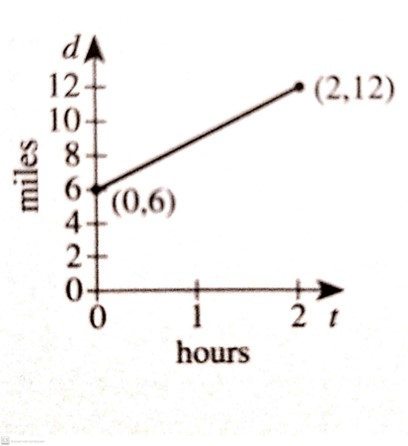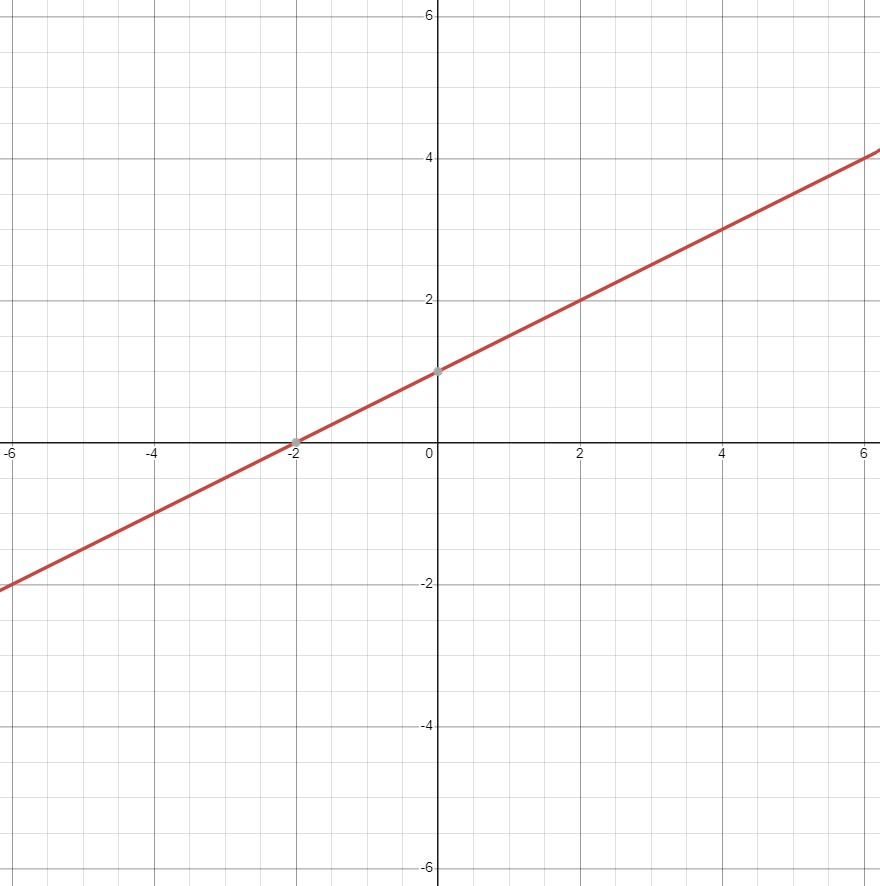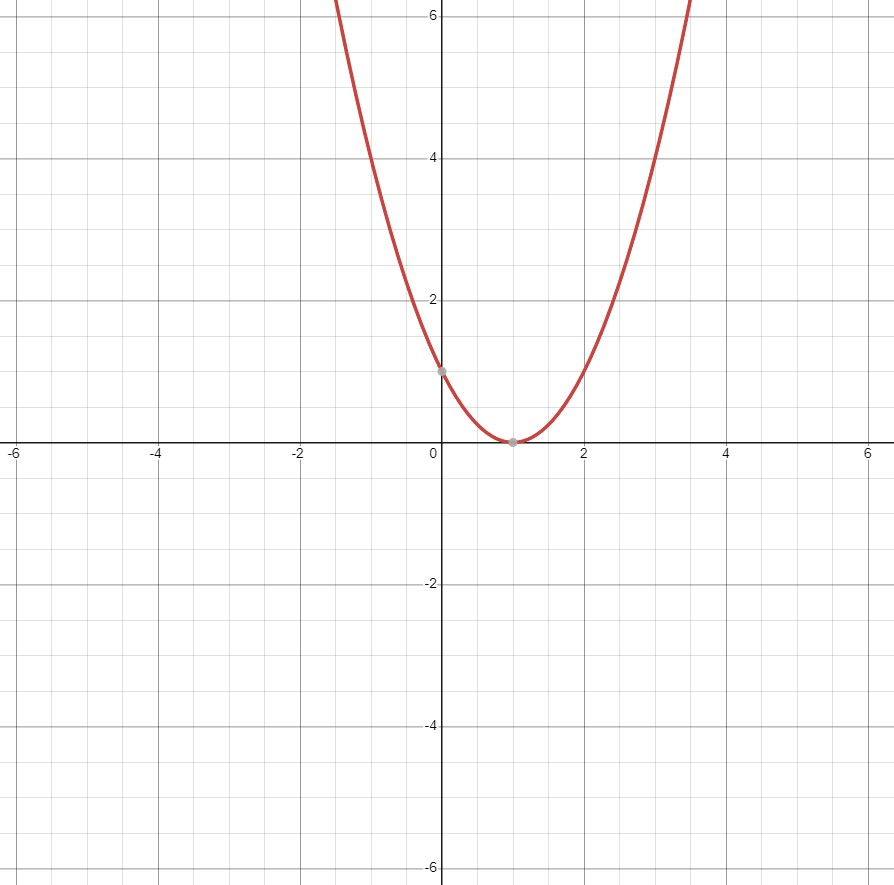This is used to represent an unknown quantity. It is usually represented by a letter
Variable
Multiply the following:
5(x+2)
5x+10
What is the slope of the line represented by the equation:
y=5x+3
5
What is the missing value in the sequence below:
24, 7, __ , -27
-10
The graph below shows the distance, 𝒅 miles, you are from home 𝒕 hours following the start of a walk. How far from home did you start?

6 miles
This is a mathematical statement in which two expressions are equal to one another
Equation
Factor the following:
2x+10
2(x+5)
What are the coordinates of y-intercept of the line depicting the following equation:
y=5x-2
(0, -2)
Given
f(x)=2x+1
evaluate
f(3)
7
What type of inequality is implied by the phrase "at least"
>=
This is a mathematical statement in which two expressions are separated by one of the following symbols:
<, >, <=, >=
Inequality
Multiply the following:
(5x+3)(x+y)
5x^2+5xy+3x+3y
What is the slope of the graph below?

1/2
Given
f(x)=2x+1
evaluate
1/f(t)
1/(2t+1)
The formula (F-32)(5/9)=C is used to convert from Fahrenheit to Celcius where F=degrees Fahrenheit and C=degrees Celcius. What is the temperature in degrees Celcius when the temperature in degrees Fahrenheit is 41?
5
These are the parts of an expression separated by addition or subtraction
Terms
Factor the following:
5x^2y^2+10x^3y
5x^2y(y+2x)
What are the coordinates of the vertex of the graph below?

(1,0)
If
g(h)=h^2-2
then
g(x+h)
?
x^2+2xh+h^2-2
While doing a problem on his calculator, Tom meant to divide a number by 3, but instead he accidentally multiplied the number by 3. Which of the following calculations could Tom then do to obtain the result he originally wanted?
Divide by 9
In the most simplified form of this type of equation, the highest exponent on any variable is 2.
Quadratic
What are the two possible values of x in the following equation?
x^2+x-6=0
x=2
x=-3
What are the coordinates of the y-intercept of the following equation:
y=x^2+5x-5
(0,-5)
Consider the function
f(x)=2x^2-x
What is the value of
f(f(4))
1540
Two workers were hired to begin work at the same time. Worker A’s contract called for a starting salary of $20,000 with an increase of $800 after each year of employment. Worker B’s contract called for a starting salary of $15,200 with an increase of $2,000 after each year of employment. If x represents the number of full years’ employment (that is, the number of yearly increases each worker has received), what is an equation that could be solved to determine the number of years until B’s yearly salary equals A’s yearly salary?
20,000+800x=15,200+2,000x